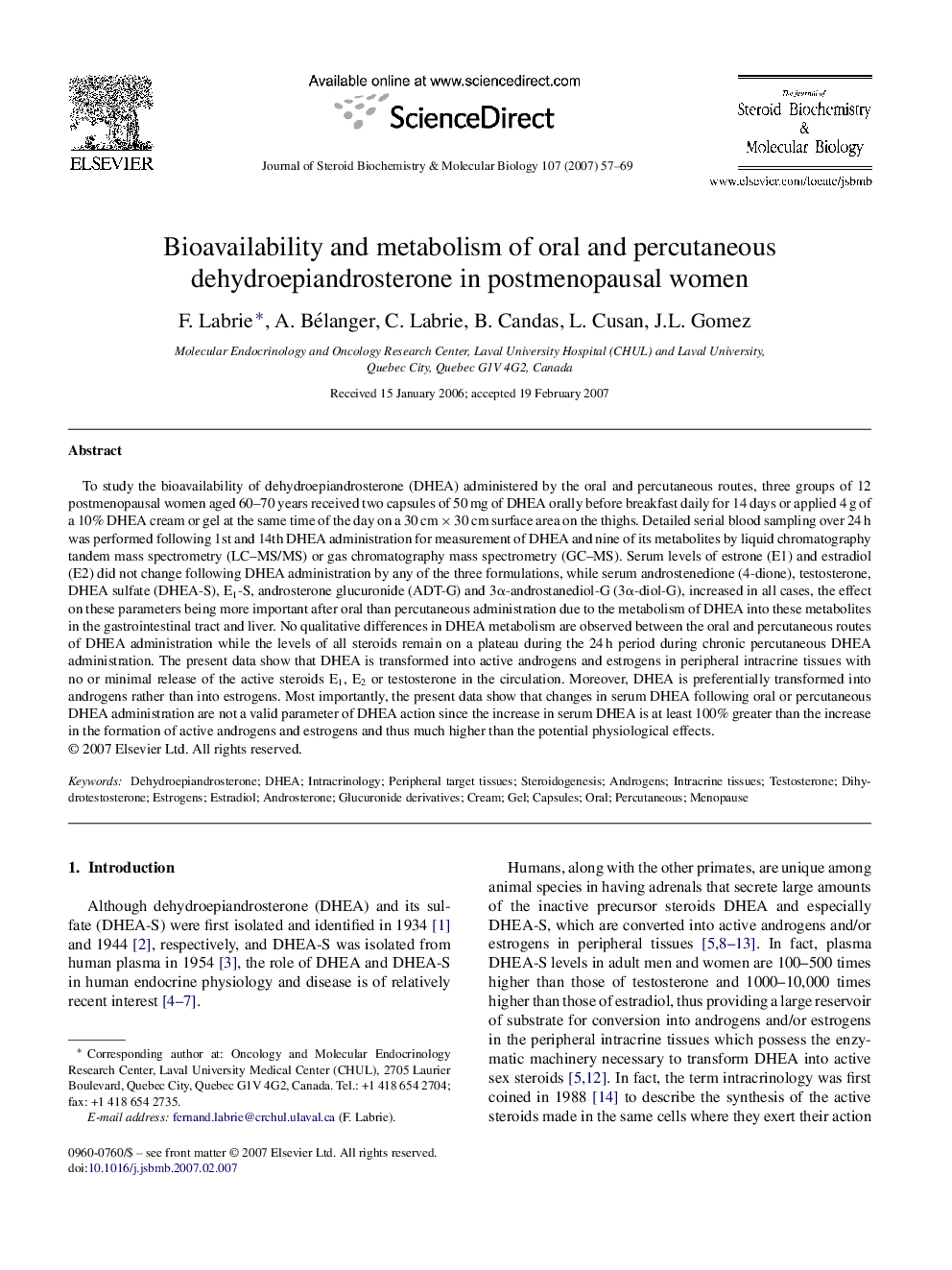| کد مقاله | کد نشریه | سال انتشار | مقاله انگلیسی | نسخه تمام متن |
|---|---|---|---|---|
| 1993007 | 1541073 | 2007 | 13 صفحه PDF | دانلود رایگان |

To study the bioavailability of dehydroepiandrosterone (DHEA) administered by the oral and percutaneous routes, three groups of 12 postmenopausal women aged 60–70 years received two capsules of 50 mg of DHEA orally before breakfast daily for 14 days or applied 4 g of a 10% DHEA cream or gel at the same time of the day on a 30 cm × 30 cm surface area on the thighs. Detailed serial blood sampling over 24 h was performed following 1st and 14th DHEA administration for measurement of DHEA and nine of its metabolites by liquid chromatography tandem mass spectrometry (LC–MS/MS) or gas chromatography mass spectrometry (GC–MS). Serum levels of estrone (E1) and estradiol (E2) did not change following DHEA administration by any of the three formulations, while serum androstenedione (4-dione), testosterone, DHEA sulfate (DHEA-S), E1-S, androsterone glucuronide (ADT-G) and 3α-androstanediol-G (3α-diol-G), increased in all cases, the effect on these parameters being more important after oral than percutaneous administration due to the metabolism of DHEA into these metabolites in the gastrointestinal tract and liver. No qualitative differences in DHEA metabolism are observed between the oral and percutaneous routes of DHEA administration while the levels of all steroids remain on a plateau during the 24 h period during chronic percutaneous DHEA administration. The present data show that DHEA is transformed into active androgens and estrogens in peripheral intracrine tissues with no or minimal release of the active steroids E1, E2 or testosterone in the circulation. Moreover, DHEA is preferentially transformed into androgens rather than into estrogens. Most importantly, the present data show that changes in serum DHEA following oral or percutaneous DHEA administration are not a valid parameter of DHEA action since the increase in serum DHEA is at least 100% greater than the increase in the formation of active androgens and estrogens and thus much higher than the potential physiological effects.
Journal: The Journal of Steroid Biochemistry and Molecular Biology - Volume 107, Issues 1–2, October 2007, Pages 57–69